“Cybersecurity Finds You”: An Interview with Rockwell Automation’s CISO

When asked how she got into cybersecurity, Nicole Darden Ford replies “cybersecurity kind of finds you.” The new chief information security officer at Rockwell Automation began her career in the military, where she first got into cybersecurity, then created a cybersecurity program for the U.S. Department of Agriculture before taking several leadership roles in the private sector.
Today, her advice for companies is surprisingly similar: cyberattacks will find you. As she puts it, “It’s not if, it’s when. And it’s not one time, it’s several.”
So how should manufacturers prepare for these threats? We spoke to Darden Ford recently about her recommendations, as well as Rockwell’s efforts to safeguard its own supply chain and provide services to other companies.
The current situation: “Manufacturers account for 65% of industrial ransomware last year. We’ve seen an unprecedented number of attacks, and we’ve seen attackers focus on OT,” Darden Ford says. She predicts the attacks on OT will only escalate.
- Meanwhile, many manufacturers have a clear strategy for IT, but they have not given as much thought to protecting their operational technology. Yet, as machines get more connected, their operations may become more vulnerable—especially as companies try to integrate legacy systems that weren’t “meant to be connected or patched.”
- In addition, “because we are so connected, there are third-party risks,” Darden Ford says. Small manufacturers may be more inviting targets for hackers than they realize, since their systems could provide a back door into the networks of their larger clients.
- On the plus side, manufacturers are getting smarter in building their defenses, she says. And that’s where Rockwell comes in.
Rockwell’s role: Rockwell aspires to become a “trusted advisor” to companies seeking cyber defenses, says Darden Ford. It already manufactured OT, so moving into cybersecurity for such equipment was a natural next step.
- Its partnerships with other firms, including Dragos, CrowdStrike, Cisco and others, allows
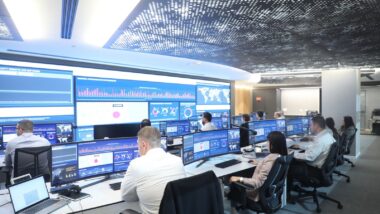 Rockwell to offer bespoke cyber monitoring and other services to its clients.
Rockwell to offer bespoke cyber monitoring and other services to its clients. - These services include penetration testing, threat detection and response and an OT “SOC”—i.e., a security operations center, which monitors threats to clients’ operations remotely.
How it works: “We have an OT cybersecurity roadmap—it starts with an assessment in your specific OT space, then walks through potential risks,” Darden Ford says. (See the end of this article for her detailed description of this roadmap.)
- The process includes building an “asset inventory, as you can’t protect what you don’t know.”
- “Then we talk about ways you can reduce your attack surface,” Darden Ford continues. “This is about segmentation. We help organizations divide their network into different domains. If you have ransomware or malware that propagates very quickly, then you have the opportunity to quarantine it.”
- In addition, the roadmap helps companies decide which tools and resources to use. For OT, you need to use very passive systems that don’t interfere with “getting the product out the door,” Darden Ford says.
After this process is complete, Rockwell’s SOC helps clients stay safe and hone their responses to real attacks.
- The SOC keeps eyes on a company’s operations remotely, notifies it of breaches within the plant network and helps it decide which threats to tackle. As Darden Ford says, the SOC stands in for the teams that companies would otherwise have to hire themselves.
On-site resources: Manufacturers can tap their existing staff to work on cyber defenses, including with offsite monitors. Darden Ford recommends drafting “the plant engineering team, along with the IT team,” who would have the knowledge and resources required.
A community effort: Large manufacturers should help educate small manufacturers on cyber issues, says Darden Ford.
- “We have a lot of suppliers, so to mitigate third-party risk, we provide more awareness about OT and advice about upping their cyber hygiene. We work closely with suppliers and do a lot of knowledge sharing,” she says.
Collaboration at the top: In addition, it’s also beneficial for CISOs and manufacturing leaders to consult their peers in what Darden Ford calls “mastermind sessions.”
- These conversations have provided her with “a lot of insights and data,” she says. She gets indispensable input on “strategies, frameworks, journeys and roadmaps,” as companies try to find their way through this cyber landscape together.
The bottom line: When asked what she says to companies that doubt the need for cyber protections, Darden Ford has a simple answer: “You wouldn’t drive your car without insurance—that’s what this is.”
- “What used to be optional is becoming mandatory,” she adds. “For small or midsize companies, you are still going to have to report” back to your large customers, many of whom require stringent protections of their suppliers. Those requirements will only get “more and more rigorous over time,” she warns.
- In other words, however you choose to do it, “you need a plan.”
The Roadmap
Darden Ford supplied us with her account of Rockwell’s cyber roadmap for its own suppliers, below. “The playbook aligns with the NIST framework, showing you step-by-step how to audit your current security state, identify gaps and take a proactive approach to mitigate risk,” she says. Here is her account of the key steps.
Step #1: Discover
- Know where you stand. Conduct a security and risk assessment—log all issues and review progress against findings.
- You can’t protect what you can’t see. You must gain a full understanding of what network assets you have on your plant floor and their current state. Start by conducting extensive network discovery and asset inventory.
Step #2: Remediate
- Work with stakeholders to prioritize assets and organizational risk levels. Take the necessary steps to eliminate, upgrade or replace unneeded, unused or unsupported OT applications and infrastructure. This will look different for every organization based on what you discover in Step #1.
Step #3: Isolate
- Establish a perimeter by physically and logically segmenting your networks. Put up a firewall and establish internal and external cybersecurity policies to protect your OT assets. Set up an on-premises industrial data center to encapsulate critical applications inside the protected OT network.
- Secure endpoints with security software on plant floor assets.
- Enable third-party remote access. Third parties need access, but you must control the access and maintain visibility into what they’re doing in your network by enabling OT access controls.
Step #4: Monitor and Respond
- Now that you have a solid foundation in place, the next step is to implement OT network monitoring to provide real-time OT cybersecurity, including malicious event/asset risk alerting, network diagnostics, AI learning and KPI dashboarding. The data only works for you if you are continuously viewing and reacting to it.
- Establish an OT SOC for 24/7 real-time alert monitoring, acknowledgement and triage. Cyberattacks aren’t limited to 9–5.
- Create an integrated IT/OT cyber event response team. Define event response and isolation protocols. IT/OT must have equal involvement and buy-in for these protocols to be successful. Execute tabletop exercises to simulate attacks and outcomes.
How Managers Can Produce Top-Notch R&D
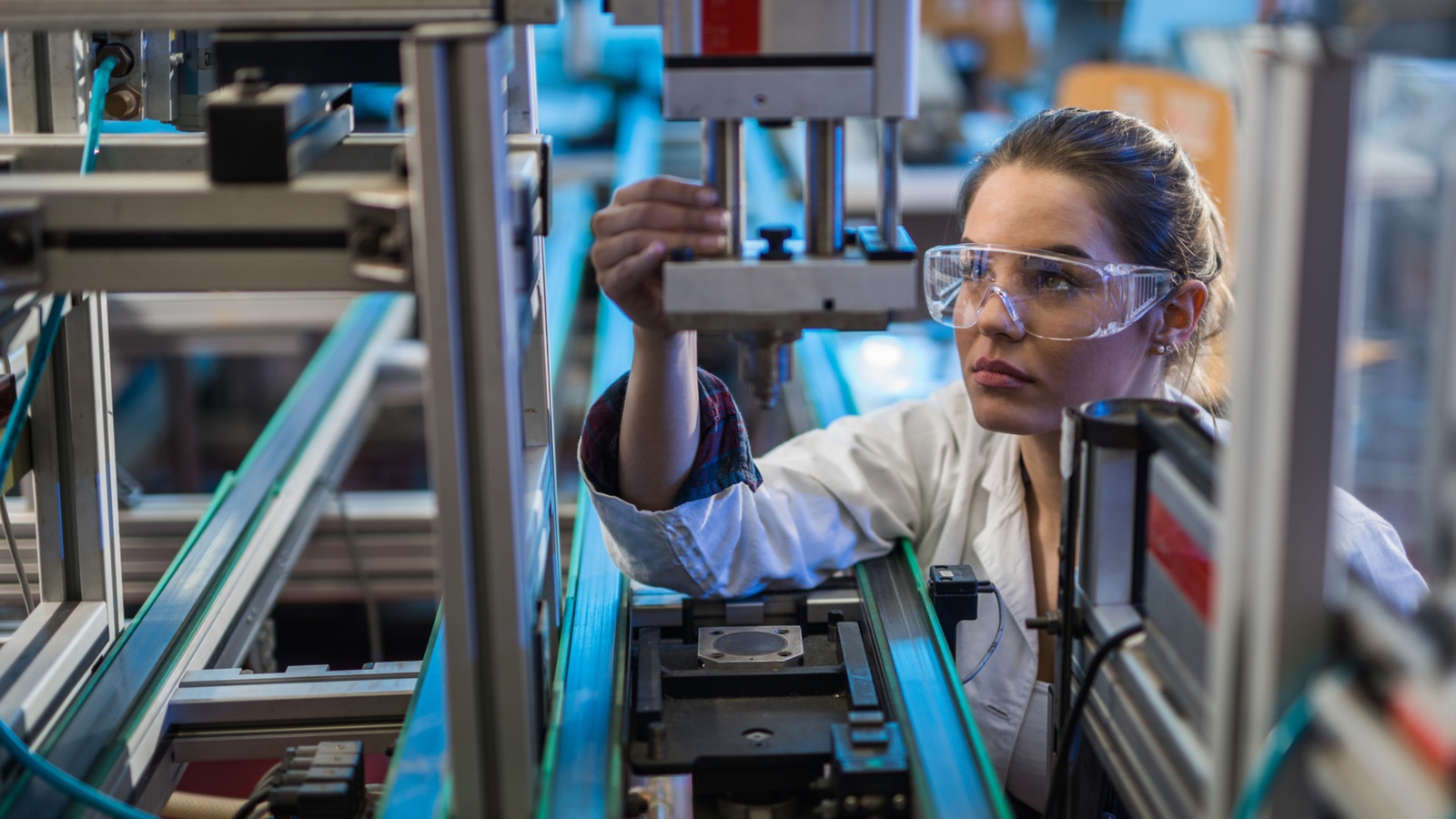
As innovation in manufacturing continues at breakneck speed, research and development is more important than ever—but it requires outstanding managers to make it all happen.
So how do these managers get the education and insights they need? The Innovation Research Interchange, a network of cross-industry innovators that the NAM combined with earlier this year, has an answer: an executive management course called Shaping Innovation Leaders.
The gist: Co-hosted by the Kellogg School of Management at Northwestern University, the course provides a forum for strategic thinking, education and networking for technology leaders from around the world.
- In 2023, it will take place on May 13–19 on the Northwestern campus in Evanston, Illinois.
The details: The goal of this seven-day program is to develop midlevel managers into leaders for their companies, by covering topics including:
- Evaluating financial results;
- Segmentation, targeting and positioning;
- Growing and defending your brand;
- Legal and strategic investments;
- Building a better network; and
- Negotiating skills and strategic alliances;
Who’s involved: To get a sense of this event’s caliber, look no further than the attendees from the 2022 course.
- They hailed from a wide range of companies, including manufacturers such as Mars, Procter & Gamble, John Deere, Hershey, NatureWorks, Air Liquide, Kimberly-Clark Corporation, Sherwin-Williams and many, many more.
The reviews are in: Participants in the 2022 course were enthusiastic about what they learned and experienced.
- “[I’m] really super impressed with the program, soup to nuts,” said John Deere Manager for Global Strategic Communications & Culture Jacqueline Kiple. “One of my favorite aspects of the program was really getting a chance to think about our business a little bit differently … to take a step back and think about the higher-level impacts that affect decision-making in our respective organizations.”
- “What I really enjoyed about this course was first and foremost the esteemed professors. … [The course] gives you a really big view of all the information you need to really understand business and understand the decisions that are getting made,” said Sherwin-Williams Associate R&D Director Tony Rook. “It gives you that top-level view of how you add value to [your] organization.”
Get involved: Registration is now open for the 2023 course. You can find additional information and register here.
Manufacturers Keep Pace with Technology Deployment
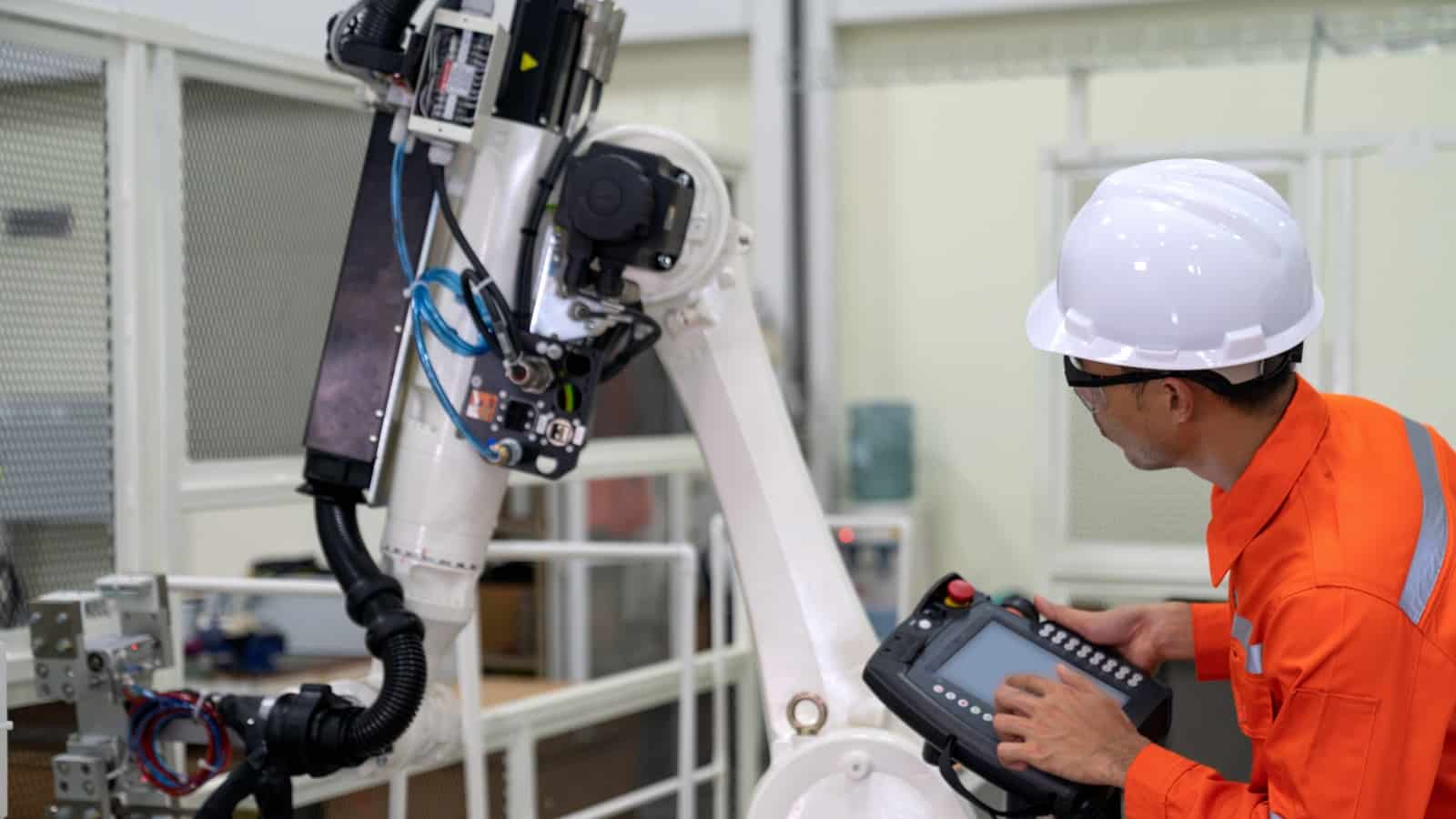
Manufacturers are staying on top of the tech game.
That was among the chief findings of a new polling conducted by the Manufacturing Leadership Council, the NAM’s digital transformation division. The annual Transformative Technologies in Manufacturing research survey aims to reveal data on current realities and expectations for manufacturing in the near future and in the years to come.
Rate of adoption: The most surprising data point was that 89% of respondents said they expect their company’s rate of adoption of disruptive technologies to increase over the next two years. That figure is up from 51% just one year ago.
Why disruptive technology? Reducing costs and improving operational efficiency were the most-cited reasons for investing in digital tech, with 83% of respondents identifying these as important motivations.
- Improving operational visibility and responsiveness came in second, at 61%.
- Other reasons include increasing digitization (40%), creating a competitive advantage (36%) and improving quality (30%).
Top near-future trends: Digital-twin modeling and simulation software, augmented and virtual reality, high-performance computing and further investments in supply chain management software will lead the next wave of investments during the coming year or two.
Not of interest: The survey found that quantum computing and blockchain technology are currently of the least interest to manufacturers.
The role of AI and ML: Artificial intelligence and machine learning usage continues to grow among manufacturers.
- Nearly 50% of respondents indicated that their companies have implemented AI, either on a single-project basis (40%) or in all factories (9%).
- About 75% said they are applying AI and ML to reduce costs and improve productivity and processes.
- Approximately 60% indicated they had used AI and ML for preventative/predictive maintenance or quality improvement.
Misunderstood metaverse: A new topic covered by this year’s survey, the manufacturing metaverse, was perhaps the least understood by respondents.
- About 38% said they were still trying to understand the technology and concept, 20% said they have no plans to adopt a manufacturing metaverse approach and 15% said they didn’t know how to respond to the question.
The last word: “Manufacturers are finding more use cases and business benefits for increasing their use of digital technology, and the pace of adoption is accelerating,” said MLC Co-Founder and Vice President and Executive Director David R. Brousell.
- “The research confirms that manufacturing is headed for an agile, connected and collaborative future driven by technology and fueled by innovation.”
Concrete Mixer Maker Finds a Growth Formula
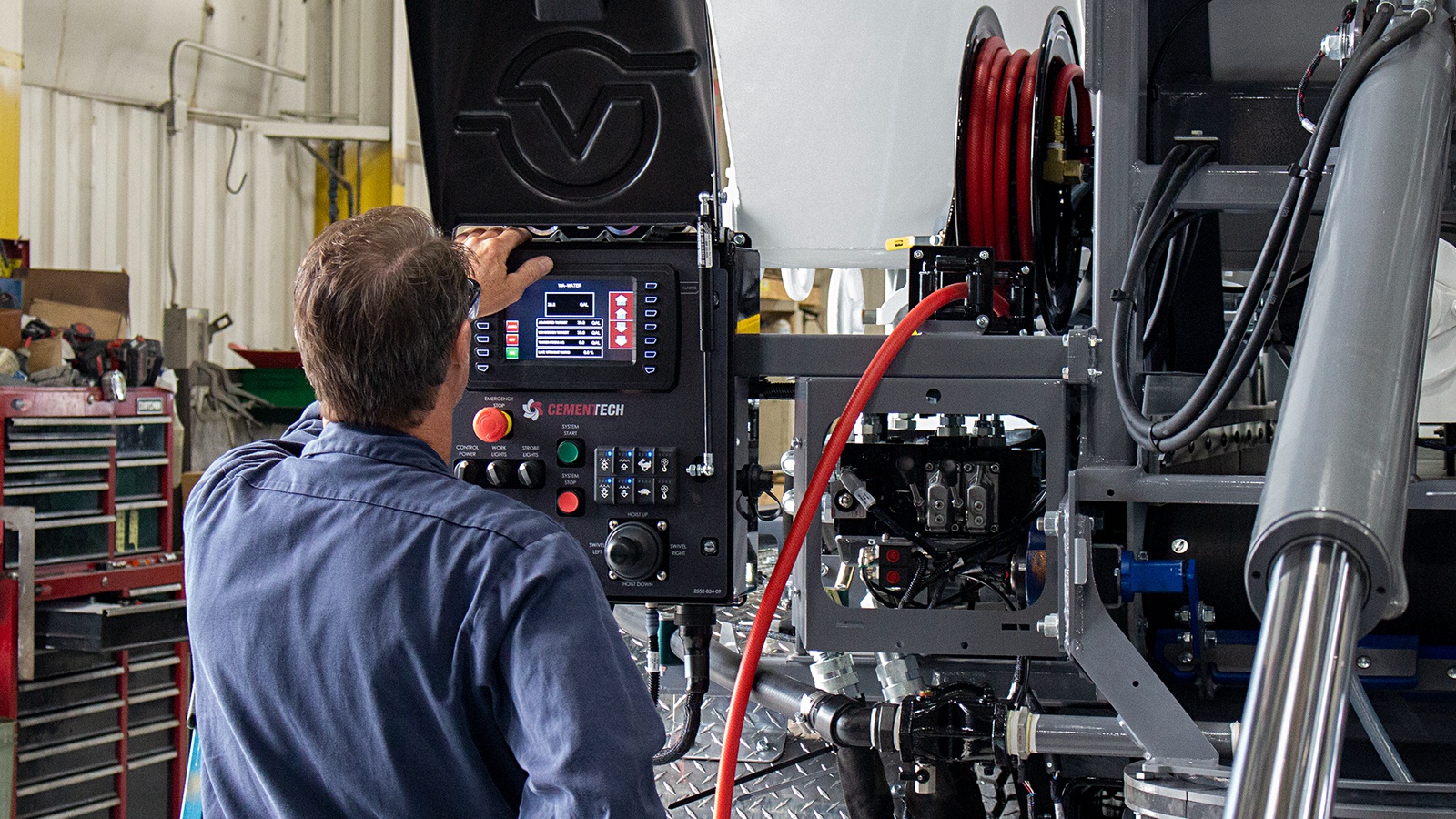
Even amid so much economic uncertainty, Cemen Tech is on track for a year of unprecedented growth. Leaders of the company, the world’s largest manufacturer of volumetric technology, attribute a good deal of its success to its loyal workforce.
Allegiance creator: Just what contributes to that worker loyalty? The answer may well be Cemen Tech’s unusual generosity.
- “We considered a number of new and different ways to continue to attract and retain good people,” Cemen Tech President and CEO Connor Deering said. “In September 2021, we made the decision to cover 100% of employee health insurance costs, the net effect of which is essentially our folks taking home more of the money they earn. That has really helped with retention.”
- The Indianola, Iowa–based company also raised wages across the board and began offering employees season tickets for local sports teams.
A new approach: Full health insurance coverage made a difference when it came to attracting and keeping workers, but the volumetric concrete mixer manufacturer was still hitting another roadblock when it came to employment: finding people with the right qualifications. So, it set out to solve the problem in house.
- As part of a planned facility expansion, the company is setting aside space for the new “Cemen Tech University,” an innovative answer to the question of how to develop employees with highly desired, specialized skills. Classes are tentatively set to start in January 2023.
- The company is also working with area high schools and technical schools to forge partnerships in which students work for Cemen Tech part time, while still pursuing their diplomas or degrees.
- “This way, we train applicants for immediate success on the job, helping to ensure a strong fit between the employee and the company from the start,” Deering said. “It also gives us an opportunity to teach new hires about our organizational culture. … I believe [our education efforts] will help support an educated team member who’s connected to our culture, resulting in a happier, better and more long-term employee.”
More incentives: Last March, Cemen Tech found a way to boost shift-worker attendance with a points-based rewards system.
- “We implemented an attendance bonus—if an employee stays within a certain number of points [for coming to work], they can earn an additional $90 a week,” said Cemen Tech Director of Human Resources Emily Lyons. “We have seen that help in terms of attracting and retaining employees and further incentivizing employees to achieve consistent attendance.”
- The company has also increased the referral bonus given to existing employees who bring in new hires, Lyons said.
Advice: Manufacturers looking to see similar growth to Cemen Tech, which is set to expand 65% this year, should consider implementing some of the firm’s ideas (if financially feasible). But companies should be prepared to incur some financial cost along the way.
- “Our growth has helped offset the profitability loss [from the increased benefits], but the reality is that our business is people,” Deering said. “If we don’t have people—good people—we’re not going anywhere. So, the fact that we’re little less profitable at the moment is OK, as long as we can continue to grow.”
MI Summit Advances Workforce Solutions
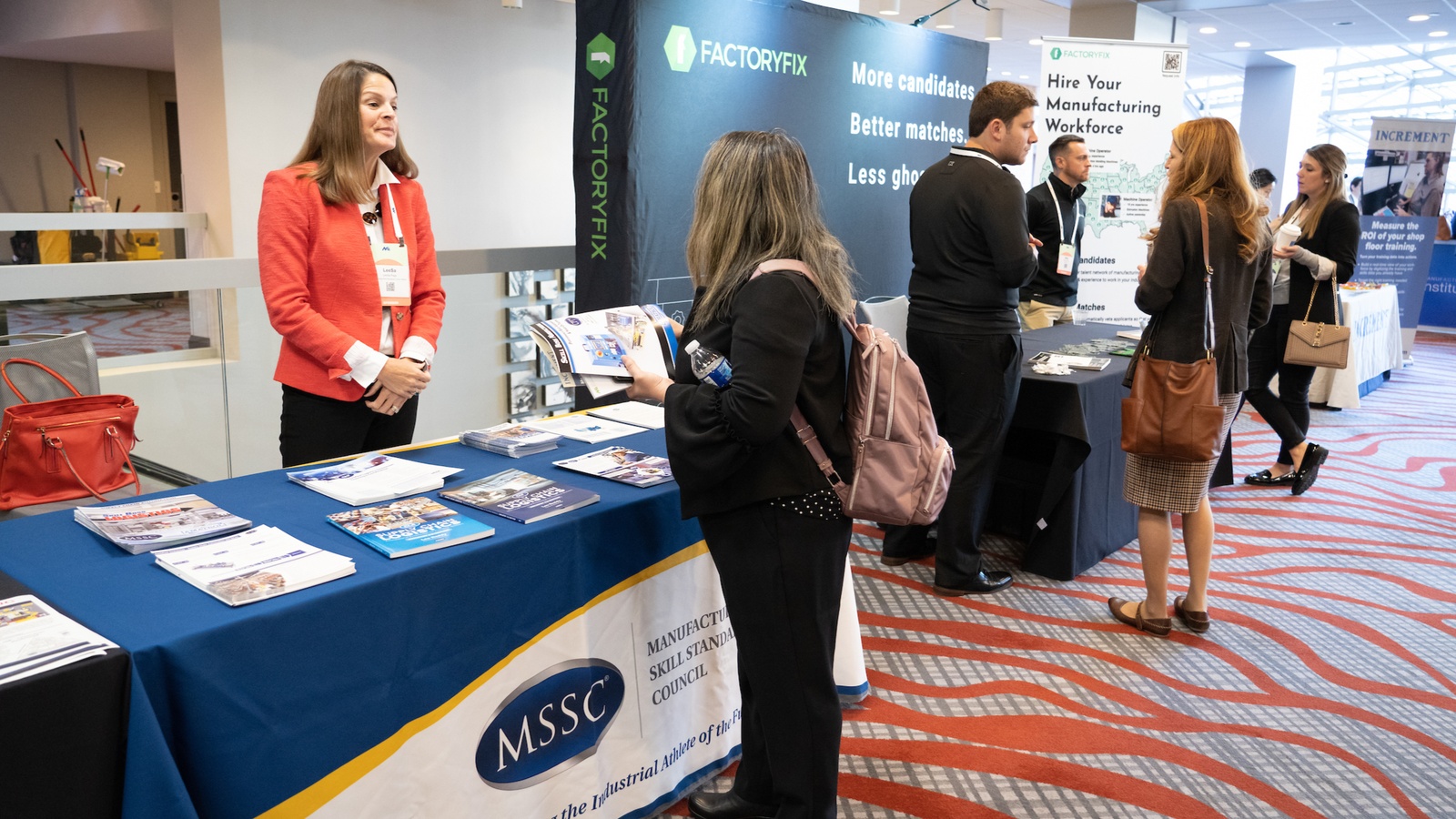
Last year, The Manufacturing Institute—the workforce development and education partner of the NAM—came to a realization: There were manufacturing conferences and there were workforce conferences, but neither addressed manufacturing-workforce challenges from a broad, national perspective. The MI wanted to change that.
And it did, just this month—with the inaugural, now-annual, MI Workforce Summit.
What it is: The summit, held this month in Cincinnati, Ohio, is a first-of-its-kind, multiday event that brought manufacturers, educators, community partners, association leaders and more together to network, attend workshops and hear talks from manufacturing and workforce leaders. All of them had the same goal: to build the manufacturing workforce of today and tomorrow to ensure the industry’s competitiveness.
- Made possible by sponsors including the Arconic Foundation, WestRock, FactoryFix, the Manufacturing Skill Standards Council and EY, and supported by the Ohio Manufacturers’ Association, the summit drew more than 300 participants.
- Half the attendees were manufacturing employers and half were from the MI’s leading partners.
- “Forging partnerships isn’t a theme, it’s an action item,” said Arconic Foundation President and Treasurer Ryan Kish. “Come up with concrete actions for your organization on how you’re going to go into the community and forge partnerships to tackle the manufacturing workforce challenge.”
What happened: The summit, with its theme of forging partnerships, resulted in the creation of more than 920 new connections among workforce stakeholders. It focused on three “areas of importance”: attracting, training and retaining quality employees and how partnerships enable success across all three. Specific events at the summit included:
- A plenary fire-side session on how partnerships helped Toyota and the entire manufacturing sector grow in northern Alabama;
- Breakout sessions focused on a range of key issues, including how parents and teachers help manufacturers attract talent, how the workforce can prepare for automation and how economic developers are now assisting in workforce development;
- Newly released research from the MI on adaptive skills and future skills needs;
- A plenary on the impact of culture on employee retention;
- Interactive Q&As on recruiting, training and retaining employees; and
- A session on how corporate and foundation grants can improve the manufacturing workforce ecosystem.
“Hidden” talent: A frequently untapped pool of potential workers—individuals with previous involvement in the criminal justice system—was another topic of discussion at the summit.
- One in four adults in the U.S. has a criminal record, according to the National Employment Law Project. Many companies have had success in hiring people with criminal records, which has led more manufacturers to begin recruiting “second chance” hires.
- A leader in these hiring practices is JBM Packaging, whose director of human capital and culture, Valerie Plis, spoke at the summit.
Hiring veterans: Military veterans are another group of promising potential hires, as speakers advised the attendees.
- More than 200,000 men and women transition out of the U.S. military and into civilian life every year, according to the Labor Department.
- The MI’s Heroes MAKE America program seeks to attract many of them to the manufacturing industry, by building connections between the military and veteran communities and companies seeking top talent.
Growing talent: The summit dove into another successful workforce solution model: the Federation for Advanced Manufacturing Education (FAME), created by Toyota in 2010 and transitioned to the MI in 2019.
- FAME, which recently wrapped up its own annual national conference, combines strong technical training and professional skills development with hands-on manufacturing work experience to create global best-in-class entry-level technicians. In just three years, it has spread across the U.S. and now has more than 400 manufacturer partners.
- From 2021 to 2022, the program saw an 18% increase in the number of participants, according to MI President Carolyn Lee.
The last word: In her remarks, Lee encapsulated the central idea behind the new summit: “When we pioneer solutions together, we’re stronger than when we work alone.”
A Small Manufacturer on What Policymakers Can Do for Her Company
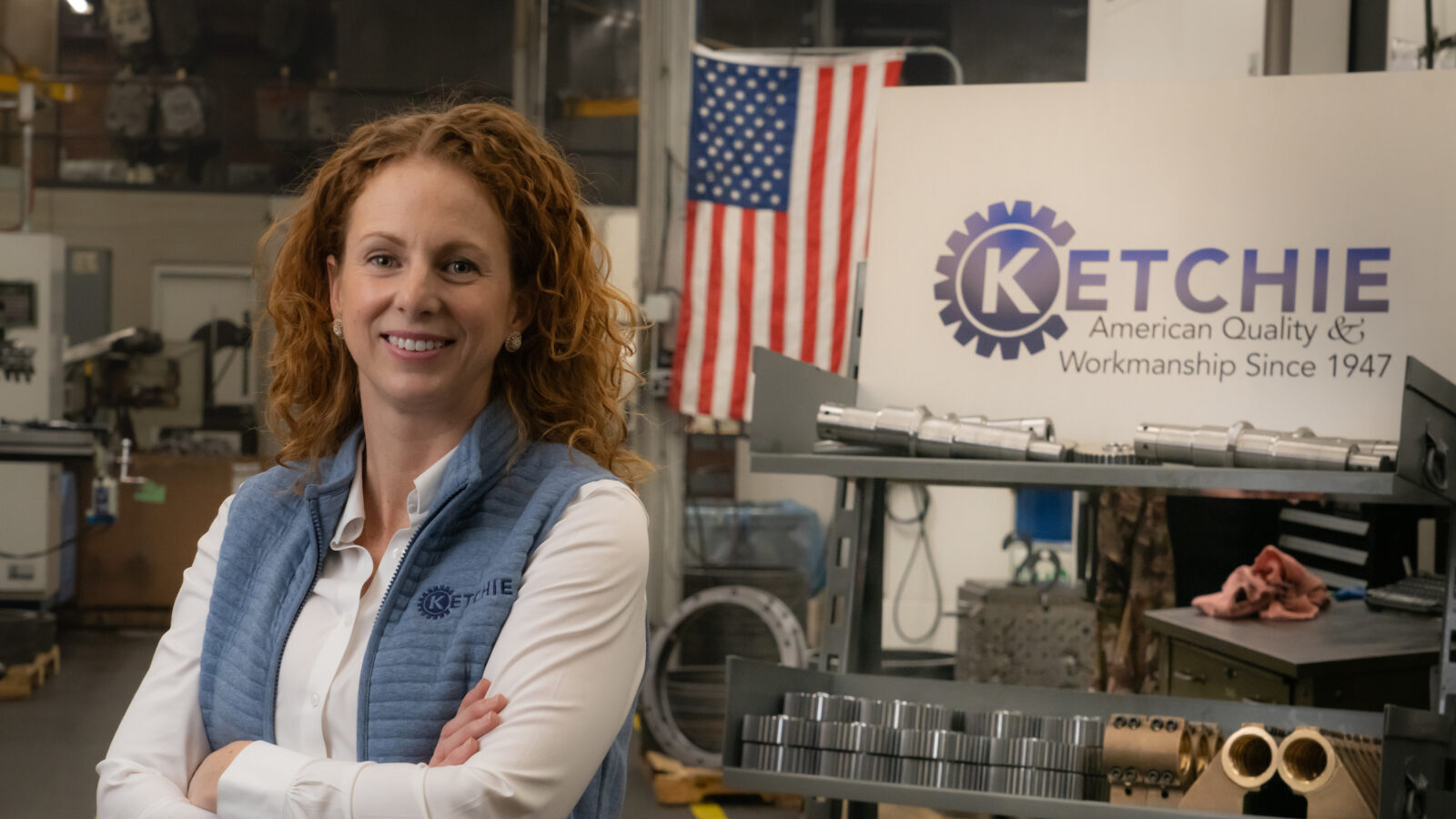
Courtney Silver runs a precision machining company that has been in business for 75 years, so she knows how fast the manufacturing industry evolves. The Ketchie, Inc., president, who serves as the vice chair of the NAM’s Small and Medium Manufacturers Group, has a clear message for policymakers and manufacturers alike.
- To stay competitive, “manufacturers must have policies that incentivize us to save for emergencies, like pandemics, and to use profits productively to invest in machines, technologies and people,” she says.
- “Small manufacturers know what to do, to invest our profits and grow”—and policymakers should let them get on with it.
We caught up with Silver earlier this fall and chatted about her plans for Ketchie, the policies that would support manufacturers’ competitiveness and more.
The history: Seventy-five years ago, her late husband’s grandfather came home from World War II to work in a local textile mill, Silver tells us.
- The former Air Force captain quickly observed that local manufacturers needed a “job shop” to provide precision machined solutions. In 1947, he founded the company.
- Since then, and through many upgrades in technology, the business has grown considerably. It now supports several industries, including “textile, rail, heavy machinery, agriculture and industrial equipment,” says Silver.
In the family: Silver joined the business in 2008, then took over as president after her husband passed away in 2014. Through all her years there, she says, “investing in the lives of the people I work with and providing them with opportunities to develop and grow their God-given talents has been what matters the most” to her.
- That dedication spills outward into the community. Silver and the company are deeply invested in their work with the North Carolina Manufacturing Institute, numerous local schools, the local Boys & Girls Club and the Cooperative Christian Ministries.
What do small manufacturers need? To help small manufacturers stay competitive and keep contributing to their communities, “we need a tax structure that works for us,” says Silver.
- The 2017 tax reform law benefited Ketchie by allowing large manufacturers to expand, meaning they had more orders for Ketchie. The company was able to hire more workers as well as provide raises and bonuses.
- However, small manufacturers need further support from policymakers, according to Silver. “Smaller manufacturers have access to less capital,” she explains, so they must often use their profits for crucial short-term investments, like new equipment.
- But they also need help from policymakers for longer-term efforts, such as saving for emergencies (including pandemics) and using their profits to aggressively attract and retain a high-quality workforce.
The absence of a tax structure that supports all these endeavors together “hinders innovation and growth and limits our ability to compete,” Silver points out.
A promising future: When asked how new technologies are helping small manufacturers innovate, Silver responds enthusiastically: “That’s why I love the industry so much—the machining technology is transformational for small businesses in our industry.”
- Ketchie has kept up with the latest innovations throughout its history. Back in the 1980s, that meant purchasing its first CNC (computer numerical control) machines for more efficient, precise machining.
- Today, it’s automation. The company’s first machine-tending collaborative robot will debut on the factory floor in November, taking over machinists’ “least favorite” part of the job—changing parts while the machines run. The robot will free up workers for more challenging and skilled work around the shop, as well as dramatically increase productivity by running unattended after shift hours, Silver says.
- Technology has “opened up” manufacturing, as she puts it. Automation, 3D printing, additive machining and more have “sped up the lifecycle from the idea to the finished part.”
People first: Technology may be evolving rapidly, but the need for a high-quality workforce remains the same. When asked about her plans for Ketchie’s future, Silver says that “the number-one challenge, again and again, is workforce.”
- Silver aspires to strengthen Ketchie’s community outreach by teaching semester-long classes in the shop for high school students, which will include mentorships and a character development curriculum along with job shadowing on the shop floor.
- Ketchie also plans to continue its leadership role in its community as an active member of the school program board, and by continuing to open its doors to tours, interns and apprentices.
- “Making these long-term investments in our youth, in our industry and in our team is foundational to who we are, and we are thankful for all of the opportunities to help shape our future workforce in manufacturing,” says Silver.
The next generation: For the president of a family company, this question must be inevitable: Will Silver’s children run the business, too?
- “Time will tell for sure. They both show strong leadership qualities and are interested in what we are accomplishing at Ketchie. My son has a lot of fun with a 3D printer at home, and my daughter already has excellent problem-solving skills. It’s going to be interesting to see!”
At the NAM: About her work at the NAM, Silver says, “I want to see a genuine opportunity for small and medium manufacturers to grow, thrive and successfully compete.”
- “Each SMM member should feel truly valued and know they have a place at the NAM. Their story, and what they do every day, matters to manufacturing in America.”
How Do You Change a Tire on the Moon?
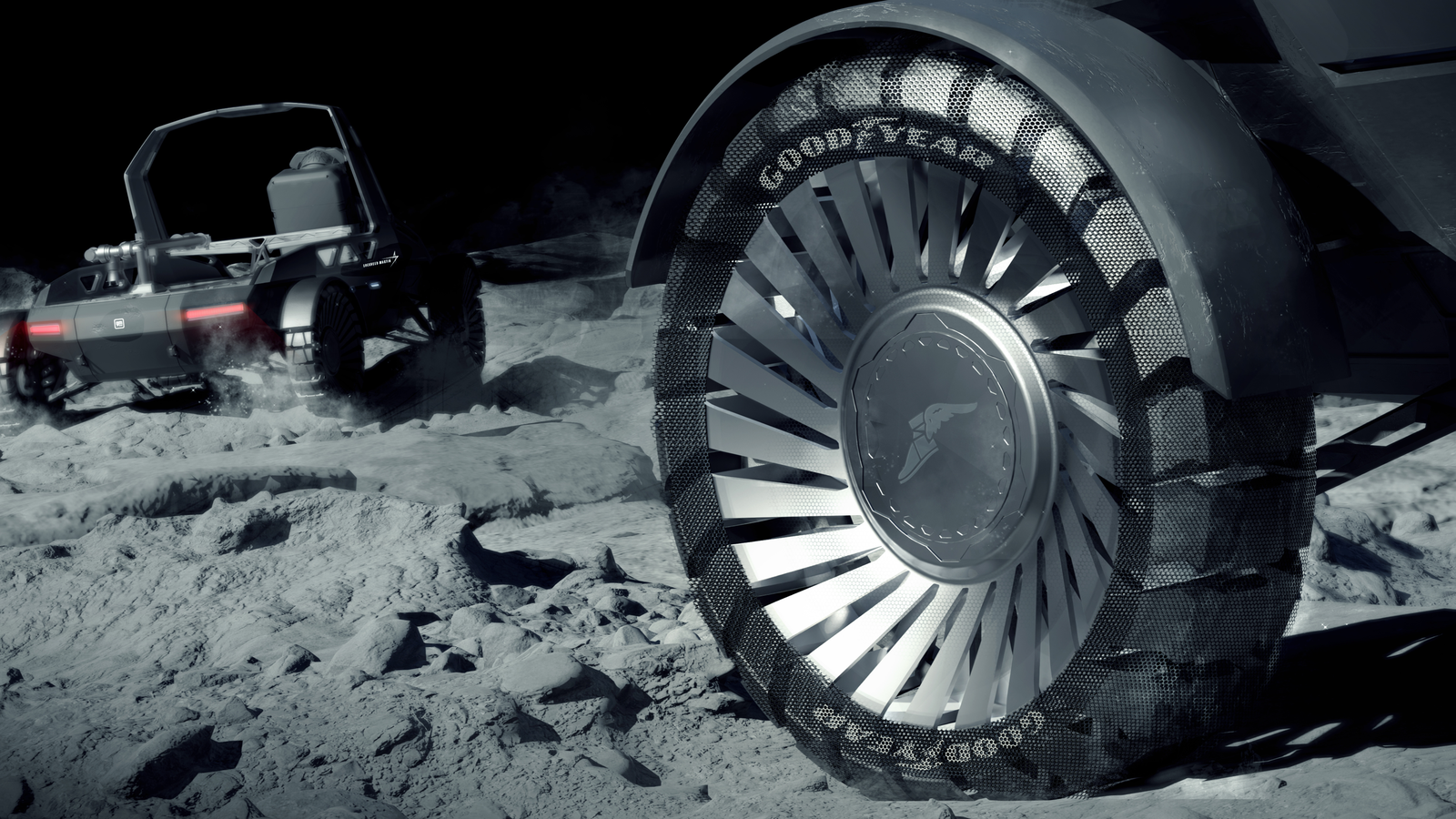
When the new lunar mobility vehicle takes its first spin around the moon, it will be sporting a familiar logo on its wheels: Goodyear’s. But unlike the tires on your car, the lunar vehicle’s will be airless, made entirely of metal and clad in mesh.
Yet, the lunar tire isn’t entirely a separate beast, according to Goodyear Senior Program Manager for Non-Pneumatic Tires Michael Rachita. The tires might be rolling around the moon, but they are closely related to some Earth-bound technology—and will help that technology evolve even further.
- Rachita chatted with us recently about Goodyear’s contributions to the lunar mobility vehicle, which is being designed and built by Lockheed Martin and GM for deployment later this decade (read our interview with Lockheed Martin Vice President for the Lunar Exploration Campaign Kirk Shireman).
- It is intended to stay on the moon for years, both supporting NASA missions and functioning autonomously when the astronauts are not around. Here’s what Rachita told us about the tires that will make it all possible.
The design: A traditional rubber tire simply wouldn’t work on the moon, Rachita explains. It wouldn’t hold its air pressure in the vacuum of space, and without an atmosphere to filter out the sun’s radiation, the rubber would quickly degrade.
- Instead, Goodyear will be using metal alloys, such as aluminum and special steels. As Rachita puts it, “You can tap into the standard materials that are used in satellites as a starting point”—materials that are already tried and tested for space.
The environment: These are some of the environmental factors that engineers must consider, says Rachita.
- Temperatures: The moon undergoes extreme transitions in temperature, ranging from -280 degrees Fahrenheit at night to 260 degrees Fahrenheit during the day.
- Gravity: At only 1/6th that of Earth’s, the moon’s gravity changes the calculation of flexibility. The metal tires act something like a spring, but since objects bear down with much less weight on the moon, the tires must be correspondingly more flexible than they would have to be on Earth, Rachita says.
- Moon dust: The lunar regolith is sharp, abrasive and electrostatic, says Rachita, and acts something like very soft sand. In designing these tires, Goodyear has taken inspiration from off-roading techniques used for sandy or rocky areas, such as deflating tires to create a soft, broad surface that almost floats over the landscape.
The tests: Some of the testing is familiar, including sessions on a traditional flat track at Goodyear’s headquarters in Akron, Ohio. The track has a rotating band like a treadmill, which the testers must slow down, as the rover will top out at 12 mph (for safety reasons). The engineers can still learn a lot from the tires’ behavior even in Earth’s gravity, Rachita says.
- For other tests, however, the company has had to “create an event,” he says. That includes finding facilities with cryogenic chambers to test the tires’ durability in extreme temperatures.
- To mimic the lunar surface, the company will use soil rigs filled with simulated lunar soil developed by NASA.
The big question: Rachita responds to our inevitable question—“How do you change a tire on the moon?”—with a simple answer: you don’t.
- In fact, he adds, the technology that gives these tires a high degree of redundancy—allowing them to sustain damage and still keep going—has important applications here on Earth.
- “This is where it all connects for Goodyear and its strategy,” he says.
A tire revolution: Goodyear is working to make products that are “maintenance free,” Rachita explains, which is essential to new developments in mobility. Airless tires have an enormous advantage for both electric and autonomous vehicles, he says.
- First, electric vehicles have far fewer parts to maintain (like spark plugs and oil systems), so it makes sense to eliminate another source of frequent maintenance—air-filled tires.
- Meanwhile, if an autonomous vehicle gets a flat, who’s going to fix it? As Rachita says, often no one will be around; AVs will spend a lot of time traveling without passengers to their next pickup points.
- Air-filled tires don’t have redundancy, as Rachita points out—you get a flat tire and it’s an immediate problem. But on an airless tire with a “tension bridge” that supports its structure, up to 20% of the spokes can break without requiring a change. And if the mesh covering the tire tears, you don’t immediately start losing all of the air inside it.
Just in case . . . The lunar mobile’s tires will be attached rather traditionally, with either multiple lugs or one lug (as found on racecars)—so they could technically be changed on the moon. But the plan is to ensure this never becomes necessary, says Rachita.
The last word: Creating tires for a long-lasting lunar vehicle is a “challenge to engineering thinking,” as Rachita puts it. It’s the sort of challenge that will pay off for the rest of us, too.
“Manufacturing on the Moon”: The Next Lunar Vehicle

When astronauts return to the surface of the moon in 2025, they will find a car waiting to pick them up. The new lunar mobility vehicle, designed and built by Lockheed Martin and GM with tires by Goodyear, will be sent up prior to the humans—but more excitingly, it will stay there long after they leave. In fact, the vehicle will remain on the moon for many years, performing experiments and fulfilling commercial contracts autonomously in between NASA missions.
We were delighted to learn all this and more in a recent interview with Kirk Shireman, Lockheed Martin’s vice president for the Lunar Exploration Campaign, who told us all about the astonishing technology involved. Here’s what we learned about the vehicle, which will be the first on the moon since 1972. Though those rovers were the “finest technology” of their day, as Shireman says, the new lunar vehicle is certainly the finest of ours.
The new design: To withstand the moon’s environment for years on end, the vehicle will require state-of-the-art components and materials. The companies are still in the “materials selection phase,” says Shireman, but he did share several of the broad requirements.
- The vehicle will use the latest in battery technology, allowing it to power down almost completely during the long, frigid lunar night (which, like a lunar day, lasts for 14 Earth days). Temperatures will range from -280 degrees Fahrenheit at night to 260 degrees Fahrenheit during the day.
- Not only must the materials hold up under the temperature shifts, which occur very rapidly, they must also withstand the sharp, abrasive electrostatic dust that “clings to everything,” says Shireman.
- In addition, the vehicle must be light—it’s tough to transport things to the lunar surface, and every ounce counts.
- And last, safety is of course paramount; the vehicle must be easy to enter and exit for the astronauts. The vehicle’s speed will top out at about 12 mph, also for safety reasons.
Testing: The moon has only one-sixth of the Earth’s gravity, and it’s pretty much impossible to simulate driving in such conditions while here on Earth. The engineers must rely on virtual reality as well as some physical tests, Shireman explains.
- GM’s “driver in the loop” simulator fulfills this function, allowing engineers to “drive” in the environment and gravity of the moon. (Shireman, who recently tried out the simulator, tells us that it is extremely challenging.)
- However, physical testing does have some important uses. Just like any other autonomous vehicle, the lunar vehicle must be tested to ensure it “can’t get into a place it can’t get out of,” as Shireman puts it—and that can be done in Earth’s gravity.
- Engineers will also perform other physical tests on the materials, including lighting tests to ensure the vehicle’s sensors can cope with the blinding light on the moon, where everything looks either white or black.
Advanced manufacturing . . . for the moon: Once the vehicle is on the moon, Lockheed Martin and GM will face a challenge very familiar to other manufacturers: deciding how to collect, organize and transmit data from their equipment.
- The vehicle will monitor its own performance and the lunar environment via a host of sensors. It can also physically carry other instruments for experimentation, says Shireman.
- However, the lunar program will “have more data than pipe” (i.e., the means of returning data to Earth) and will need to prioritize how much and how frequently it transmits information.
- And unlike manufacturers communicating with their equipment on Earth, the engineers will have to cope with delays in response time, which could take several seconds or longer, says Shireman. If the rover is located on the back side of the moon, the signal must go through a relay satellite before reaching Earth.
No garage: Out of curiosity, we asked Shireman an earthling’s question: will the lunar vehicle have some sort of garage where it can seek protection from the cold or sun?
- The answer to that is no—it will simply park itself wherever it happens to be to wait out the night. It’s “much more useful if you can avoid going back anywhere,” says Shireman, because that means the vehicle is not tied down to one spot.
- Even though it would be nice to be able to park it in a garage, which would keep the vehicle warm, the tradeoff is not worth it, he explains.
Moon activities: The lunar missions will have tremendous scientific value, not least because these vehicles can roam widely and produce granular maps of the moon’s landscape. However, they are designed for commercial applications as well.
- The companies are still exploring their options, Shireman says, but these may include transporting commercial lunar payloads and helping other companies (and countries) explore the moon’s resources.
- Then there is the “coolness” factor—people might pay just to interact with this technology, for example by driving the rover telerobotically from Earth. (Sounds like fun!)
The last word: As Shireman says, the rover itself is the foundation of a new venture, not an end point. “The rover isn’t just a thing to be manufactured; it will help us manufacture things on the moon”—and advance lunar exploration and commercialization where it hasn’t gone before.
Take a look: Check out the lunar mobile design in action here, in an animated video made by GM and Lockheed Martin.
A Winning Formula at AB InBev
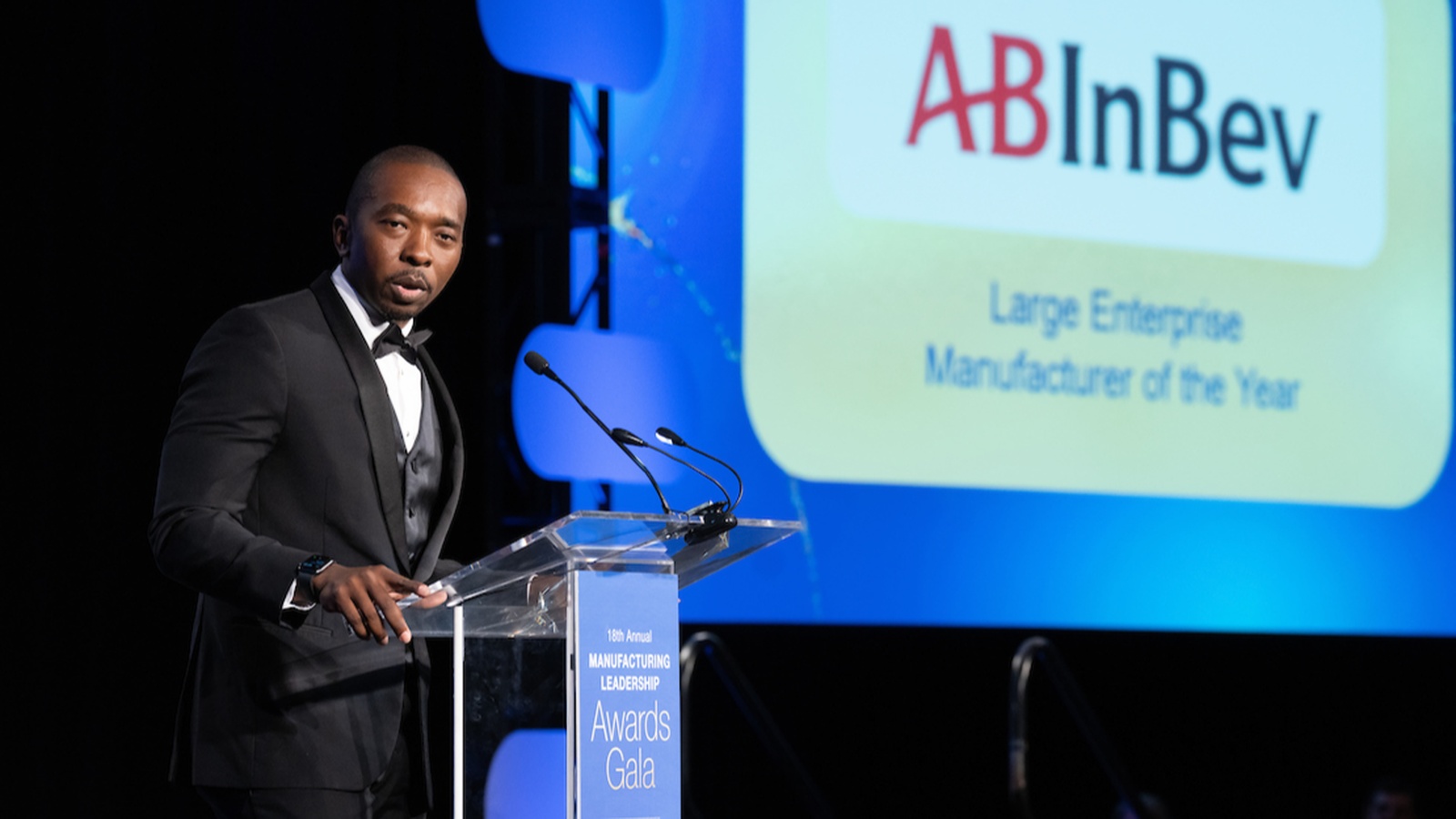
Anheuser-Busch InBev recently got to raise a toast to its team members—not just once, but four times.
After being named a 2022 Manufacturing Leadership Awards Gala winner in three categories—AI and Machine Learning, Digital Network Connectivity and Operational Excellence—the company took home the ultimate prize: the MLC’s Large Enterprise Manufacturer of the Year. (The MLC is the NAM’s digital transformation partner.)
Recipe for success: What’s brewing in AB InBev’s recipe for success? According to Global Vice President of Engineering and Operations Marcelo Ribeiro, a focus on world-class performance in all of the company’s operations.
- This means leveraging disruptive technologies and empowering frontline teams to drive sustainable and reliable performance, all with the dream of “to create a future with more cheers.”
Utilizing AI: One of AB InBev’s award-winning projects was its innovative use of AI to improve utilities performance. The company implemented a set of smart algorithms to optimize the performance of its air compressors and boilers, giving managers and operators a real-time, utilities-performance dashboard that alerted them when a target was not being hit.
- Started as a pilot in just five breweries, the project was so successful, the company rolled it out to more than 30 other breweries worldwide.
- AB InBev plans to expand the algorithm beyond boilers and compressors to provide utilities usage forecasts and prediction models.
Preventing downtime: Another AB InBev winner was the firm’s approach to attaining 100% reliability and optimization of all equipment and processes. This led to the development of a tool that monitors equipment performance and prescribes maintenance actions, both of which minimize downtime.
- The company’s ambitious reliability goal also creates safer working conditions in breweries and maximizes sustainability by reducing consumption of raw materials, packaging and spare parts.
Lessons on digital transformation: While technology can provide solutions to problems, resist the urge to simply “do” technology for technology’s sake, Ribeiro cautioned. First identify a problem, then determine how technology can help fix it. Don’t work the other way around.
- “One thing we have learned in recent years is that future is becoming less predictable,” Ribeiro said. “Manufacturing needs to create an ecosystem in the future where we can learn from each other. And we have to actually enable that to happen as becoming more resilient will require building a collaborative ecosystem.”
Nominations are being accepted now for the 2023 Manufacturing Leadership Awards. Find complete details here.
Operating on Sunshine: Sealed Air Invests Big in Solar
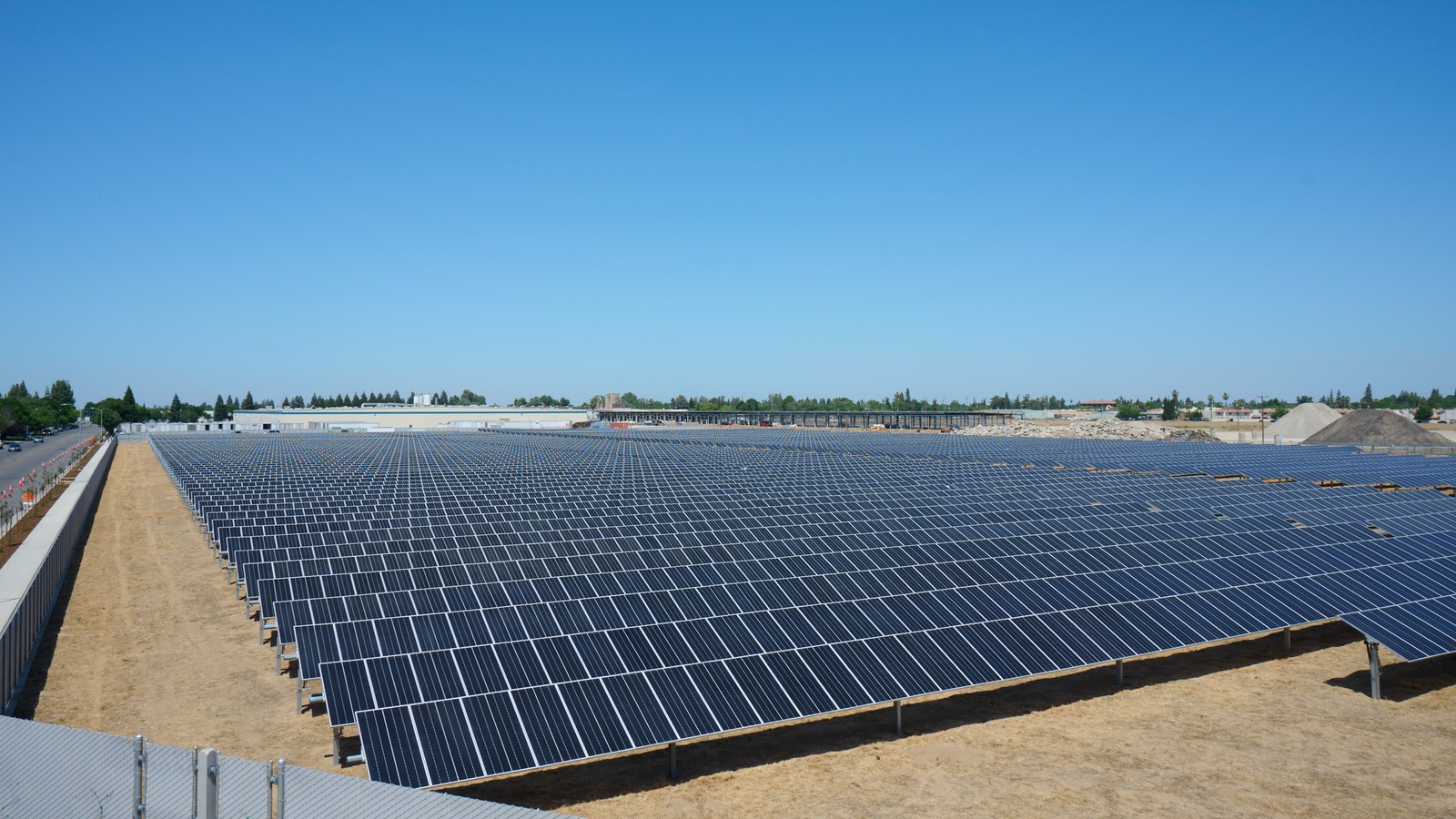
For Sealed Air Corporation, the $1 million annual savings it will realize from its recent investment in an 11-acre solar farm is just a perk that goes along with doing what’s right.
Toward a goal: “We always have sustainability in mind with everything that we do, whether it is a new product or a new facility,” said Sealed Air President of the Americas Tobias Grasso. “We always ask, ‘What is this bringing to us?’ and ‘How is this advancing our mission to leave our world better than we found it?’ Because we have a stated goal to be net-zero carbon neutral in our operations by 2040, we want to make sure that all our investments are in line with that strategy.”
- Earlier this year, a $9 million solar installation at Sealed Air’s Madera, California, manufacturing facility began generating electricity—at a rate capable of fulfilling 98% of the plant’s electricity needs, according to company calculations.
- The solar farm is integrated into the legacy power system so that system has a backup energy source when needed.
The right site: Sealed Air, the maker of the iconic Bubble Wrap® original cushioning and numerous other automation, packaging and digital printing solutions, started making plans for the 8,975-solar-panel farm in 2020. It chose the Madera location as the site for several reasons.
- “We have fairly extensive energy needs for that facility,” Grasso said. “And we had the available land and a good number of hours [of available sunlight] to provide the solar energy.”
- The manufacturer partnered locally with a team from TotalEnergies—a French company that recently acquired SunPower Commercial and Industrial Solutions—on the project.
The impact: Though the company got its solar installation up and running in less than two years, its effect on the environment will be long-lasting and far-reaching.
- The solar panels will prevent 5,000 metric tons of carbon dioxide emissions in just their first year in operation.
- Over the course of 15 years, that’s the greenhouse gas emissions equivalent of driving 15,000 cars for one year, Grasso said.
Solar-power advice: Manufacturers with the right energy needs, land and daily hours of sunlight could benefit from investment in their own solar installations, according to Grasso.
“First, you have to look at the dimensionality of your power needs; you have to look at the economics,” he said. “It’s a good idea to have a partner like TotalEnergies because they can help you through their experience so you model it the right way.”
